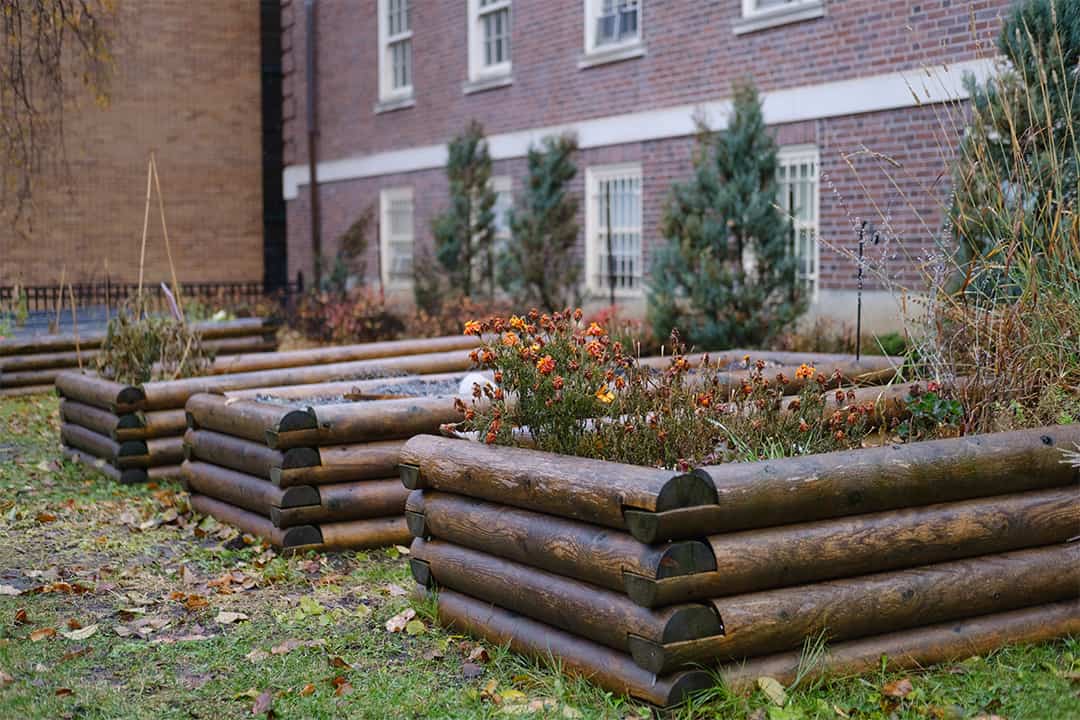Community gardens are a way of bringing affordable, locally grown produce to a community and educating members on agriculture and food systems. You may have seen a few around U of T’s campuses.
With the rising costs of groceries, food insecurity has been on an upward trend in Canada; household food insecurity across the 10 provinces was 17.8 per cent in 2022, up from 15.9 per cent in 2021. A 2023 BMC Public Health report finds that across Canada, roughly 15 per cent of full-time postsecondary students are facing food insecurity. According to the Government of Canada, food insecurity refers to “the inability to acquire or consume an adequate diet quality or sufficient quantity of food in socially acceptable ways, or the uncertainty that one will be able to do so.”
Food centres run by U of T student unions have also seen increased use this past year as students grapple with rising costs of living, precarious employment, and a lack of affordable housing. Meanwhile, one in 10 Torontonians now rely on food banks. This all means that getting fresh produce on the table has become increasingly difficult for many students. Community gardens can’t solve that problem — but they can help with it.
SkyGarden
SkyGarden is a volunteer-run vegetable garden located on the roof of the Galbraith Building at 35 St. George Street. In an email to The Varsity, SkyGarden Coordinator Alison Morley explained that most volunteers who run the garden are U of T students, staff, and alumni.
Although SkyGarden produces around 400 to 600 pounds of produce each season, Morley explained that the garden’s main purpose is not to provide food for the volunteers but to educate them on urban agriculture. “Often volunteers take home a bit of produce here and there, but it is more to give them a sense of accomplishment (tasting the fruits of their labour!) than intended to provide nutrition,” Morley noted.
This past summer, SkyGarden donated its harvest to Dixon Hall Farmer’s Market, which operates a pay-what-you-choose market in the Downtown East community of Toronto. In 2018, SkyGarden donated over half of its harvest to Scott Mission, a support service in Toronto for people in precarious housing and financial situations.
Morley has also given tours of the garden to around 200 U of T community members. “The amount of produce we harvest and donate makes a pretty small difference to actual food security, but I see a larger purpose in showing people the possibilities of growing food in very urban spaces,” Morley wrote.
Campus community gardens and systemic change
Michael Classens is an assistant professor in the School of the Environment at U of T. He spoke with The Varsity about his involvement with campus gardens and his academic research on Campus Food Systems Alternatives.
Classens pointed out instances of campus gardens actively contributing to enhanced food security on campus, such as Trinity College’s Rooftop Garden and Dig In! He also spoke about how those groups have organized free farmers’ markets in front of Sidney Smith Hall, not only ensuring that fresh produce grown on campus is economically accessible but also removing barriers by providing it to anyone without questions, stigma, or assumptions.
Classens also noted that these community gardens’ potential longer-term benefits are teaching students how to “organize and advocate for change” in the structural roots of food insecurity. “I don’t think students are [often] given practical opportunities to do that work in classrooms,” he said.
Some solutions to those structural problems, Classens noted, are simply a matter of financial security — increased income, affordable housing, and reduced tuition costs. However, he also emphasized that food systems themselves — how food is grown, transported, and sold, and by whom — require transformation.
An imperfect solution
Classens pointed out a limitation in urban agriculture and alternative food systems initiatives, highlighting that they tend to be predominantly white and upper middle class. “In the absence of explicit strategies to make these places equitably accessible, they just aren’t,” Classens said.
The irony here is that students who are Black and Indigenous are among those at the greatest risk for food insecurity. Classens pointed to dedicated Black and Indigenous gardening spaces at Toronto Metropolitan University in its Daphne Cockwell Health Sciences Complex rooftop farm as one successful instance of equitable access to urban agriculture. More broadly, Classens also pointed to the university’s recent announcement that it would cover tuition for Indigenous U of T students as a step to increasing financial security — and in turn, food security.
The role of campus community gardens in tackling food insecurity is not simple. While these gardens are great educational tools and can provide fresh produce in irregular instances, they cannot provide more substantial and consistent food. More work within and beyond community gardens will be necessary to create comprehensive food security solutions on and off campus.


